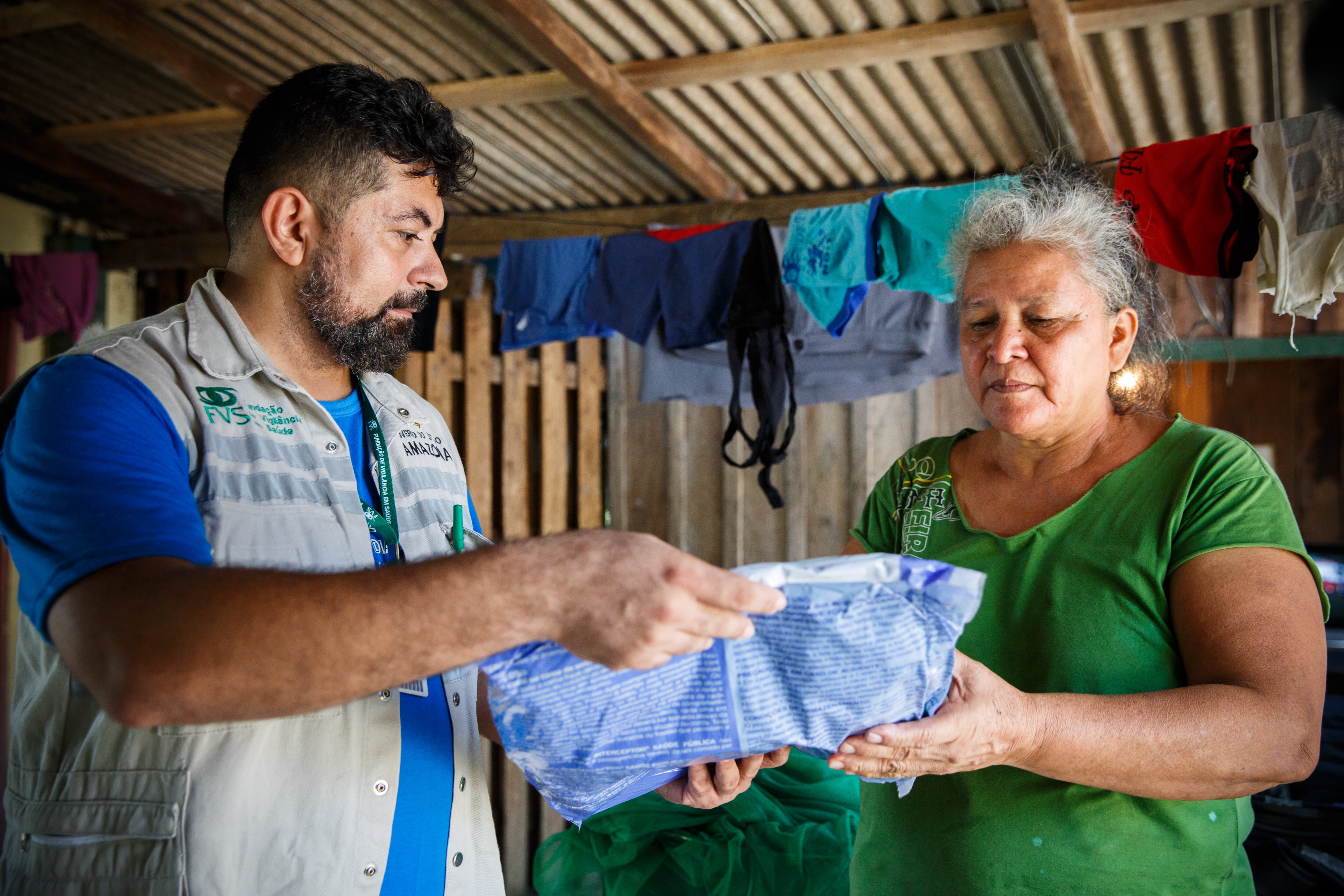
Brazil has one of the largest community health worker (CHW) programs in the world – 238,000 CHWs serve as a bridge to the health system for nearly 160 million people, about 60 percent of the Brazilian population.
Brazil’s CHW program (Agentes Comunitários de Saúde; ACS) was designed to address three key limitations of the country’s previous health system:
- Fragmentation (in the form of parallel and uncoordinated systems)
- A focus on hospital-based curative care to the exclusion of primary and preventive care
- Large inequities in coverage and access to health care
The last goal reflects the ethos of the era in which the CHW program was designed. As the nation emerged from military dictatorship in the 1980s, civil society demanded a health system that reflected the country’s new ideals: universal, decentralized, participatory, and capable of delivering broad improvements in quality of life while reducing inequity. It has lived up to most – but not all – of these principles.
Each CHW in Brazil is part of an integrated team of primary health care experts that includes a nurse, a nurse assistant, a physician, and four to six CHWs. The CHW’s role in this team is to serve as a bridge between communities and the health system as well as other government services. CHWs make monthly household visits to every family served by the team – referring patients for health care or social services, following up on care previously provided, monitoring chronic conditions, collecting socioeconomic and health data, and providing health education.
This holistic model addresses the full range of drivers of poor health including social determinants (such as hygiene, sanitation, and education), and access to other government entitlement programs. It also boosts access to primary health care – a powerful, multisectoral formula for achieving improved health.
Determining the impact of CHWs alone in Brazil is challenging because of their embedded position within the team of health care providers. Nevertheless, since one of the core responsibilities of CHWs is to generate demand for primary health care (PHC), tracking the number of people who use the PHC system can help determine some of the impact of CHWs. For example, from 1981 to 2008, Brazil saw a 450 percent increase in the number of people seeking primary care. In addition, the frequency of health care visits increased from around three per capita per year to more than eight from 1994 to 2009, which could in part be attributed to CHWs, because ensuring appropriate follow-up care was a primary responsibility of CHWs.
Our interviews with in-country and global experts and our desk research indicate that CHWs played a significant role in the country’s broader health achievements over the last three decades by increasing access to health care. These achievements include:
- Reducing under-five mortality by 75 percent (Millennium Development Goal 3)
- Reducing maternal mortality by 58 percent (Millennium Development Goal 4 called for a 75 percent reduction)
- Doubling immunization coverage, which reached 98 percent in 2000
Impact was strongest in the poorest communities, where access to care has traditionally been limited. For example, between 2000 and 2013, as CHWs expanded across the country, Brazil saw a twofold reduction in ambulatory care sensitive conditions mortality (deaths avoidable by timely, preventive disease management at the primary health care level) in the mixed-race (known as pardo) and black populations compared with generally wealthier white populations. This reduction and other similar data suggest that CHWs and their colleagues were effective tools for broadly increasing access to health and social services and increased access most among the poorest and most disenfranchised populations.
CHWs helped achieve these results in a cost-effective manner. The cost of the Family Health Team, which includes CHWs and one family doctor, one nurse, one assistant nurse, and six community health agents has ranged between US$31 to US$50 per person per year.
The following five strategies, which we will explore in greater detail later, helped Brazil’s CHW program reduce inequities and improve health and quality of life:
- Multi-sectoral approach to improving health
- Civil society engagement
- Innovative Financing
- Targeting
- Integrating into the health system
Low- and middle-income countries with health inequities may draw lessons from Brazil’s success in connecting marginalized populations to the national health care system, reducing under-five mortality, and increasing immunization. Likewise, middle-income countries facing increasing noncommunicable disease burdens may find Brazil’s approach to disease management informative, because it increased use of PHC services and effectively focused on the prevention, detection, and management of chronic conditions such as asthma, cardiovascular disease, diabetes, and stroke.,
